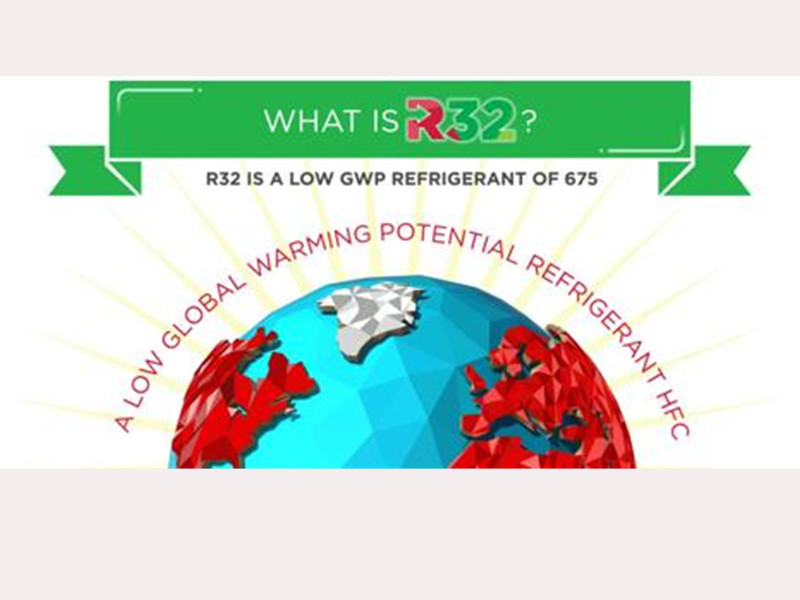
As we all know, more and more customers are asking for R32 refrigerant type heat pump in the last couple years.
OSB also having more and more R32 type heat pump, such as r32 mini pool heat pump vertical design, r32 air to water heat pump for 50-60°C hot water.
But why changing r410a to R32, many hear about it but not knowing why.
From the year of 2006, the market moved to R410A refrigerant (also an HFC) as it offered higher efficiencies, achieved by operating at higher pressures.
However, R407c and R410a are known as greenhouse gases and are partly responsible for the greenhouse effect on the Earth. In 1999 the Kyoto Protocol on global warming listed HFC refrigerants that were contributing to global warming.
This in turn led to the introduction in Europe of the F-Gas Regulations and at the start of January 2015, the next stage of the F-Gas laws was introduced which detailed the phase down of HFC refrigerants.
Each refrigerant has a Global Warming Potential (GWP) with carbon used as the base. Carbon has a GWP of 1.
R410A has a GWP of 2,088 meaning that if one kilogram is released into the atmosphere it would have 2,088 times the harmful effect of one kilogram of carbon.
That is why we are now seeing a move to a new refrigerant – R32, which has a GWP of 675 (two-thirds less than R410a).
Let’s review the benefits of R32 :
1. Has a low GWP (675)
2. Has zero ozone depleting potential (ODP)
3. Is ideal for the next generation of equipment
4. Offers higher efficiency and longer pipe runs
5. Is F-Gas phasedown compliant
6. Requires less refrigerant volume per Kw
7. Is affordable and readily available
R32 is a single component refrigerant, meaning it is easier to reuse and to recycle. It is also relatively inexpensive to produce, is easier to handle because it doesn’t separate and utilizes familiar technology, keeping costs similar.
R32 is also low-toxic, is difficult to ignite and does not explode.
After all, please contact us now to let us know which heat pump models you need to update to be R32 refrigerant? Thanks!

